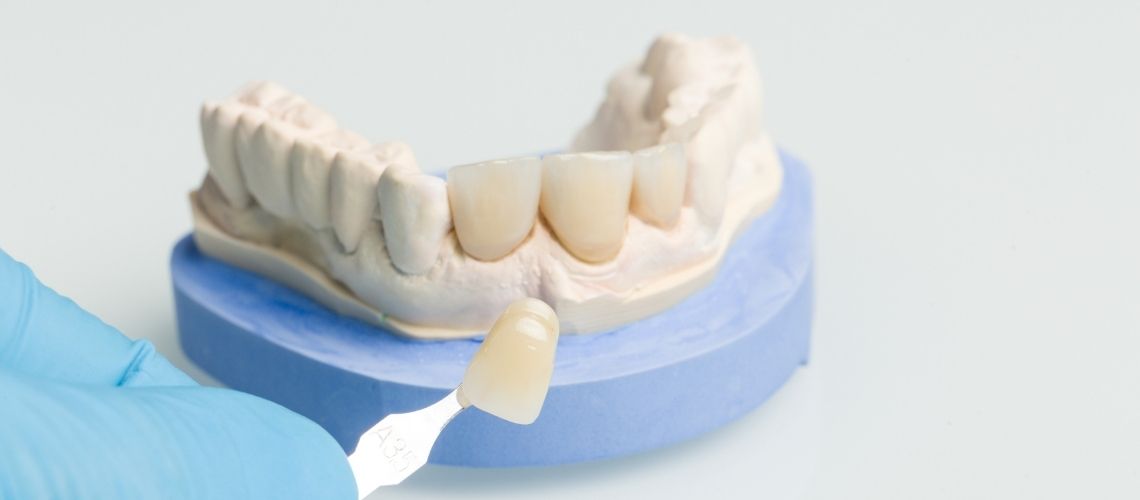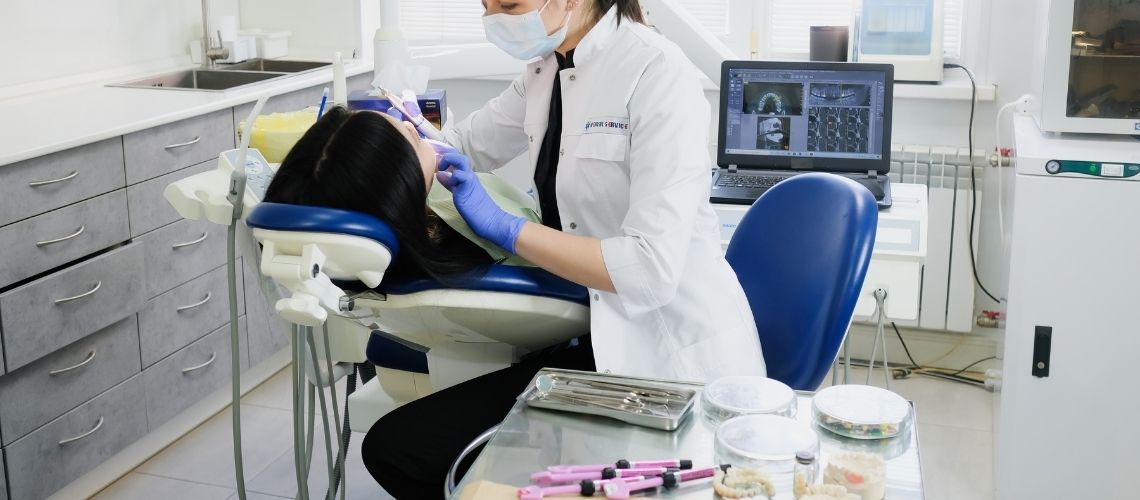The sinus lift operation is an innovative method to replace missing tooth roots in the posterior upper jaw. By using special materials, the jawbone is elevated, creating the foundation for future dental implants. Additionally, this procedure offers various options that can be adapted to individual needs and the condition of the jawbone. Despite the numerous benefits, the procedure also carries risks. Therefore, it is crucial to be well-informed about the process. By consulting with their dentist or specialist, patients can make an informed decision.
What is a Sinus Lift Operation?
A sinus lift is a surgical procedure aimed at creating enough bone mass under the maxillary sinus membrane of the upper jaw for the placement of dental implants. The sinuses, air-filled spaces next to the nose and below the eyes, are located above the upper premolars and molars. Within these sinuses is a thin bone layer lined by a membrane. During the operation, this membrane is carefully lifted to make room for new bone material and subsequent dental implants. The sinus lift can be performed either before or simultaneously with implant placement. The main goals of the procedure include:
- Creating sufficient bone structures for implants.
- Improving the success rate of dental implants.
Through this procedure, patients can benefit from the advantages of fixed dental implants even with insufficient bone availability in the upper jaw area.
Before & After Photos
Experience the impressive transformations of our happy patients.
Sinus Lift Procedure as a Precursor to Dental Implants
A sinus lift procedure can be crucial for creating the conditions for dental implants in patients who lack sufficient bone material in the posterior upper jaw area. This procedure generates enough bone below the sinus membrane by inserting material between the jaw and the maxillary sinuses. Depending on the existing bone structure at the planned implantation site, the methods can be divided into two main groups:
External Access
- No existing bone: Material is inserted from the cheek side of the sinus to lift the membrane. Implantation occurs after bone healing in a separate procedure.
- With some existing bone: Material is also inserted from the cheek side, but implantation can occur immediately.
Internal Access
- With some existing bone: The sinus is lifted by gently tapping through the implantation site in the mouth, where the material is inserted and the implant is placed immediately.
The time span from surgery to final dental restoration varies, typically ranging from six to twelve months, but it can take longer.
Materials Used in Sinus Lift Surgery
Various bone substitute materials are used in a sinus lift operation. These serve as a scaffold into which the patient’s own bone can grow. The bone regeneration process can take between four to twelve months. Frequently, Bio-Oss, an artificial, sterilized bone derived from cattle and treated for safe human use, is used in sinus lift procedures. Additionally, a protective membrane may be placed over the bone substitute material.
Bone substitute materials:
- Autogenous bone
- Bone from other humans
- Animal bone
- Synthetic sources
The most commonly used protective membrane in sinus lift operations is Bio-Gide, a resorbable, artificial membrane of porcine (pig) origin. The surgeon will explain the products intended for the procedure. If there are concerns about the use of animal-based products, these should be discussed with the surgeon.
Get free offer for Sinus Lift Surgery in Turkey
Risks of Sinus Lift Operations
Like any surgical procedure, a sinus lift operation in Turkey carries certain risks. Immediately after the operation, there may be swelling and pain, which can usually be controlled with simple painkillers like ibuprofen and paracetamol. Swelling often peaks two days after the procedure and may cause bleeding, occasionally leading to nosebleeds. Additionally, the sinuses may feel full or blocked for several weeks after the operation. Dizziness, though rare, may occur but is usually temporary.
Immediate problems include:
- Membrane perforation or tear (19% probability with external access and 3.8% with internal access)
- Swelling
- Numbness from local anesthesia
- Pain
- Bleeding
Later issues can include infections (2.9% with external access and 0.8% with internal access), graft exposure (3%), and insufficient bone formation for implant placement (1%). In rare but serious cases, there can be persistent numbness in the cheek and upper teeth area, as well as communication between the sinus and mouth, leading to long-term infection and the need to remove the graft.
To minimize these risks, it is recommended to use painkillers to alleviate discomfort, avoid blowing the nose for two weeks after the procedure, and take prescribed medications such as antibiotics and decongestants post-operation.
Consequences of Deciding Against a Sinus Lift Operation
If a person decides against a sinus lift operation, alternative methods are available to compensate for the loss of teeth in the posterior upper jaw. Initially, the dentist will provide consultation on various options:
- A denture, which serves as a removable replacement for missing teeth.
- A bridge, which uses adjacent teeth to close the gap.
Additionally, there is the option to forgo tooth replacement altogether. However, this decision has various consequences. Foregoing treatment can lead to long-term deterioration of the jaw structure. Furthermore, chewing and speaking functionality may decrease, negatively impacting the quality of life. Therefore, patients should carefully weigh this decision and consider all available options to make an informed choice.
How Much Does Sinus Lift Surgery Cost in Turkey?
At Hollywood Dental Clinic, the cost of sinus lift surgery in Turkey starts at €200. The total price may vary depending on the complexity of the procedure, the amount of bone needed, and other individual factors. Check our price page for more details.
Take 360 Tour of Our Clinic
FAQ
When is a sinus lift not possible?
A sinus lift is not feasible in the presence of an acute sinus infection. The procedure must also be postponed in cases of chronic sinusitis until the inflammation has completely subsided. Individuals with uncontrolled diabetes are often not suitable candidates. Severe osteoporosis also poses a high risk for complications, making the procedure risky. Additionally, insufficient bone quantity in the upper jaw can prevent the execution of a sinus lift. The same applies to poor bone quality, which increases the risk. Complex sinus anatomy can also make the procedure too risky. Therefore, it is essential that the dentist thoroughly evaluates the patient’s individual situation.
How long does it take to heal after a sinus lift?
The healing time after a sinus lift extends over several phases. Initially, the swelling typically decreases within a week, with discomfort significantly reducing during this period. This is followed by a longer phase in which bone integration takes place, usually lasting between four and six months. During this time, it is crucial to follow the surgeon’s instructions precisely. Various factors, such as the type of graft used, affect the duration of recovery. The patient’s individual healing characteristics also play a significant role in this process.
How painful is a sinus lift?
A sinus lift usually does not cause pain during the operation due to local anesthesia. Additionally, sedation can be provided for further comfort. However, post-operative discomfort such as pressure sensations and swelling may occur. The treating doctor typically prescribes painkillers to alleviate these symptoms. Antibiotics may also be used to prevent infections. Most patients find the pain after a sinus lift to be tolerable, with the recovery period usually lasting one to two weeks.
How long should you avoid blowing your nose after a sinus lift?
After a sinus lift, nose blowing should be avoided for at least two weeks. Depending on individual healing, the surgeon might recommend a longer period. Following the surgeon’s specific instructions is crucial during this time. It is important to avoid any pressure on the sinuses, instead opting for gentle sniffling if needed to clean the nose. This approach supports the healing process and prevents complications. It is essential to avoid any activities that could increase pressure in the sinus cavities. Adhering to these guidelines ensures a safe and effective recovery after the procedure.
When can you resume normal eating after a sinus lift?
The return to normal eating after a sinus lift depends on the healing process. Initially, the patient must consume soft foods and liquids, gradually reintroducing solid foods. This transition phase helps protect the surgical site. It typically takes a few weeks to fully return to a normal diet. Following the surgeon’s instructions precisely during this time is crucial. Careful adherence to these recommendations supports quick recovery, so the time to resume normal eating varies.
Why are bridges not recommended after a sinus lift?
Bridges are generally not recommended after a sinus lift. The newly built bone in the upper jaw needs time to heal and integrate with the existing bone. Placing a bridge too early can disrupt this healing process, potentially leading to implant failure. The patient also goes through a recovery phase post-operation, during which swelling and discomfort can occur. Therefore, it is advisable to wait several months before considering a dental bridge or implant to ensure the best possible outcome.
Can implants and bone grafting be done simultaneously?
Implants and bone grafting can often be performed simultaneously if the existing jawbone is dense enough. This procedure is known as immediate implantation. In such cases, the jawbone provides the necessary initial stability for the implant. During the operation, the bone graft is placed around the implant, promoting bone growth and supporting the implant’s long-term success. If the jawbone is not sufficiently dense, a bone graft is done first, followed by implant placement after a healing phase.
Is installment payment available for treatments involving sinus lifts?
Many dental clinics offer financing options for treatments that include a sinus lift. Payment plans vary depending on the clinic and the patient’s individual needs. Patients can discuss various options directly with the dentist, who will provide detailed information about available payment modalities. Possible interest rates or fees are also transparently explained. Some clinics cooperate with external financing providers specializing in medical treatments, offering additional options for effectively managing costs.

Dentist Handan Nohutcuoğlu graduated from Ege University Faculty of Dentistry in 1987. He has gained experience in various fields by working in many dental polyclinics throughout his career, combining his knowledge and experience. He continues to work at Hollywood Dental at the moment.






















